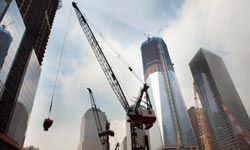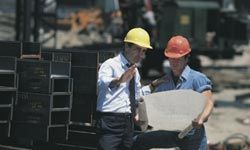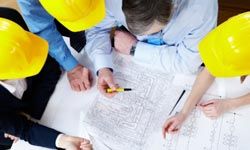At 1,271 feet (387 meters) and counting, the towering structure at One World Trade Center in Manhattan's financial district is the city's tallest building, casting a shadow over even the famous Empire State Building, just a hop, skip and jump uptown. Constructed on the site of the original World Trade Center, the building is a testament to American resilience, not to mention the country's astonishing ability to... build large things. That's right, this glass-enclosed monolith didn't sprout up out of the sidewalk all by itself: Since 2006, a massive construction crew has been hard at work raising the world's newest skyscraper [source: Washington Post].
At the helm of this and every other hard hat project, from cementing a parking lot to constructing an apartment building, is a construction project manager (PM).
Advertisement
The PM has the primary responsibility of planning a particular construction job and overseeing its progress along the way. The position typically requires at least an associate's degree -- some require a four-year engineering degree -- and five(ish) years of experience in a related field. The experience pays off: PMs earn about $84,000 a year and their employment prospects are expected to grow by about 17 percent this decade [source: Bureau of Labor Statistics].
Read on for a rundown of a PM's responsibilities in running a construction project.



